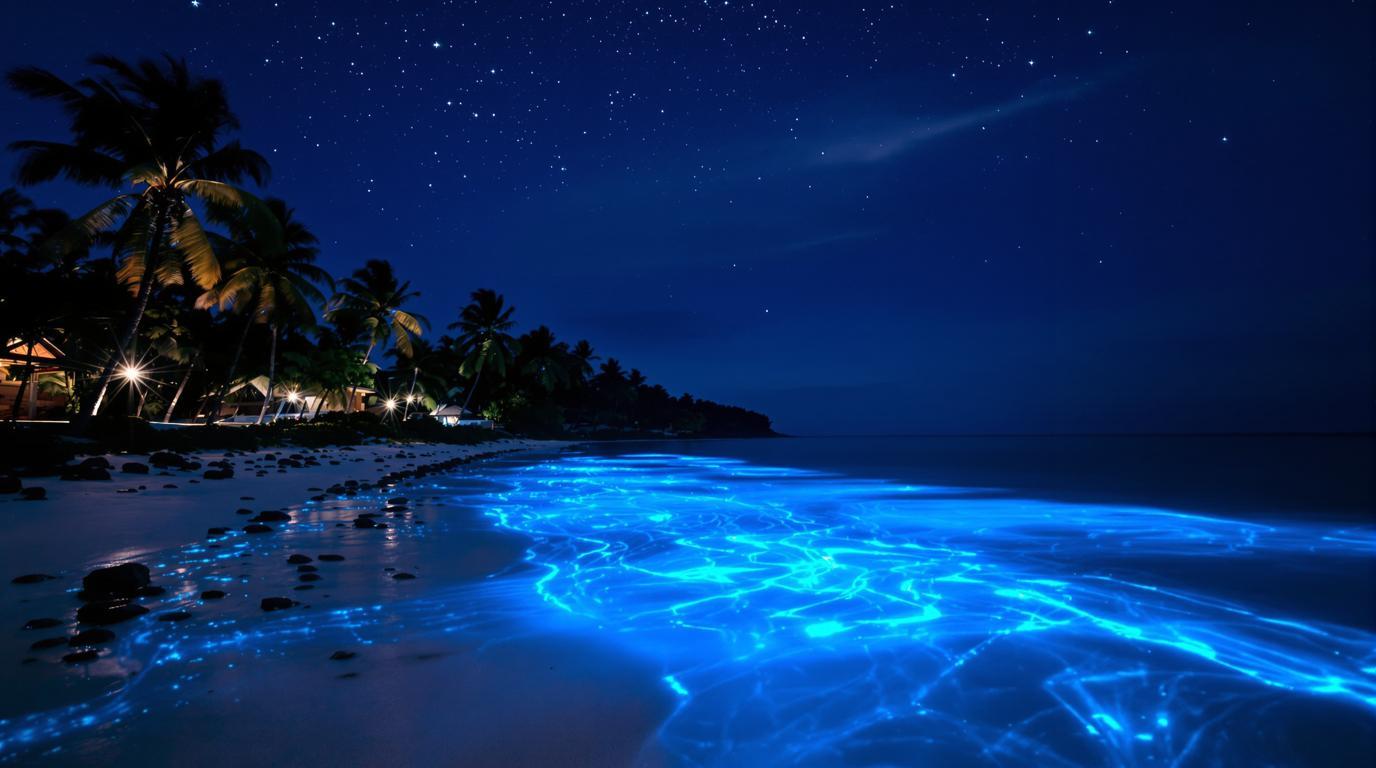The luminous waters of Bangaram Island shimmer with an ethereal blue glow that rivals—and some say surpasses—the famed Maldivian seas. Yet this jewel in India’s Lakshadweep archipelago remains one of travel’s best-kept secrets, with visitor numbers a fraction of its more famous Indian Ocean neighbor.
A blue paradise hidden in plain sight
Part of the Lakshadweep archipelago, Bangaram Island boasts waters so intensely azure that they appear almost unreal. The unique combination of pristine coral reefs, white sand seafloor, and exceptional water clarity creates a hypnotic blue palette that photographers struggle to capture without accusations of filter use.
Unlike the stunning lagoons of the South Pacific, Bangaram’s isolation has kept mass tourism at bay, preserving its natural splendor. The island sits within a coral atoll formation that creates a natural swimming pool effect, enhancing the color intensity.
Nature’s bioluminescent light show
Perhaps Bangaram’s most magical secret occurs after sunset. The shores illuminate with natural bioluminescence—tiny phytoplankton that glow electric blue when disturbed by movement. Walking the beach at night, each footstep ignites a trail of twinkling blue stars in the sand.
“The first time I saw Bangaram’s waters glowing at night, I thought I was hallucinating,” says marine biologist Dr. Aisha Patel. “It’s one of the few places in India where you can witness this level of bioluminescence regularly.”
The permit that keeps paradise pristine
Lakshadweep’s strict entry permit system has inadvertently preserved Bangaram’s pristine state. All visitors—Indians and foreigners alike—must secure permits before arrival, limiting tourism to sustainable levels. Foreigners can only visit three of Lakshadweep’s 36 islands: Bangaram, Kadmat, and Agatti.
This regulation has created what travel photographer Vikram Nath calls “India’s last authentic beach paradise.” The absence of large resorts means Bangaram remains relatively unchanged, unlike many other Asian beach destinations that have succumbed to overdevelopment.
Underwater wonderland that rivals the Maldives
Beneath those famous blue waters lies an explosion of marine biodiversity that many divers consider superior to parts of the Maldives. The coral reefs surrounding Bangaram host over 600 species of fish and 78 varieties of coral, creating a submarine paradise for snorkelers and divers.
“I’ve guided diving tours across the Indian Ocean for fifteen years,” shares Lakshadeep diving instructor Mohammed Ibrahim. “Bangaram’s underwater visibility regularly exceeds 30 meters—something even the premium Maldives resorts can’t guarantee year-round.”
Island living: Simplicity over luxury
Unlike Europe’s luxury island getaways, Bangaram offers a more authentic experience. Accommodations are comfortable but modest, powered by generators that shut down overnight. This enforced digital detox allows visitors to reconnect with nature’s rhythms—falling asleep to ocean sounds rather than television.
The island’s remote location makes accessing it challenging. Visitors must fly to Agatti Island (the only airport in Lakshadweep) and then take a boat to Bangaram. This journey deters casual tourists but rewards determined travelers with beaches often shared with only a handful of others.
A fragile paradise worth protecting
Bangaram’s pristine state remains threatened by climate change and coral bleaching. Local conservation efforts include coral rehabilitation projects and strict regulations against removing marine life. These initiatives echo those of other ecologically sensitive island communities working to preserve their natural treasures.
For travelers seeking alternatives to overexposed destinations, Bangaram offers a glimpse of what the Maldives might have been decades ago—before international fame transformed it. Like other hidden island gems, its relative obscurity is both its charm and its salvation.
The secret of India’s bluest waters may not remain hidden forever, but for now, Bangaram Island offers a rare opportunity to experience paradise before the crowds discover it. Those willing to navigate the permit process and journey to this remote outpost will find waters that don’t just rival the Maldives—they might make you forget about them altogether.
